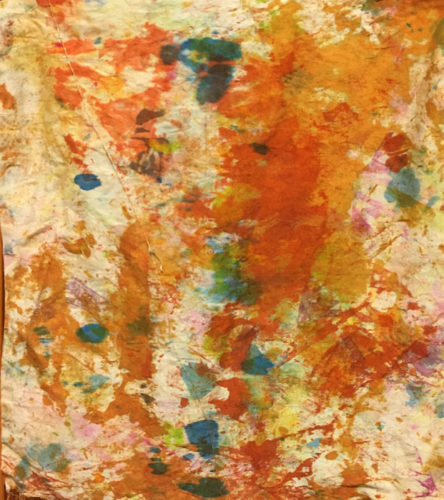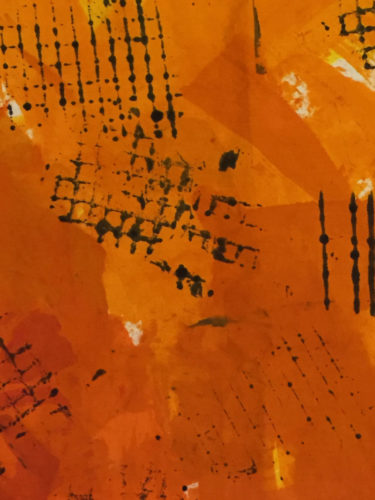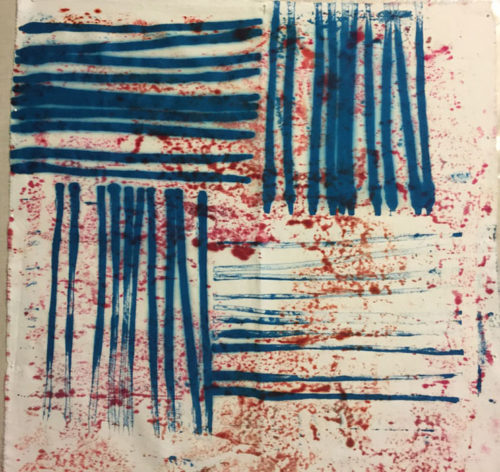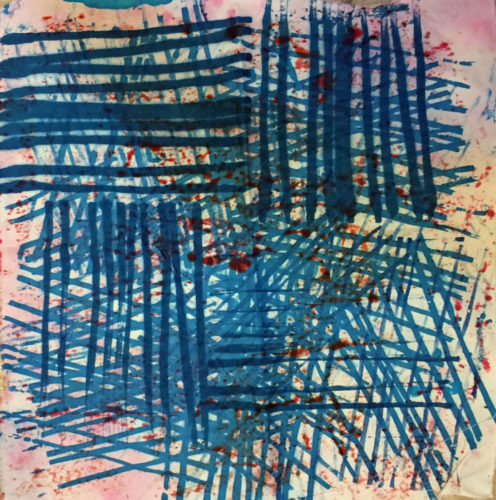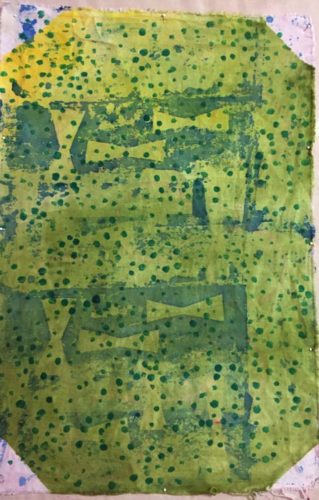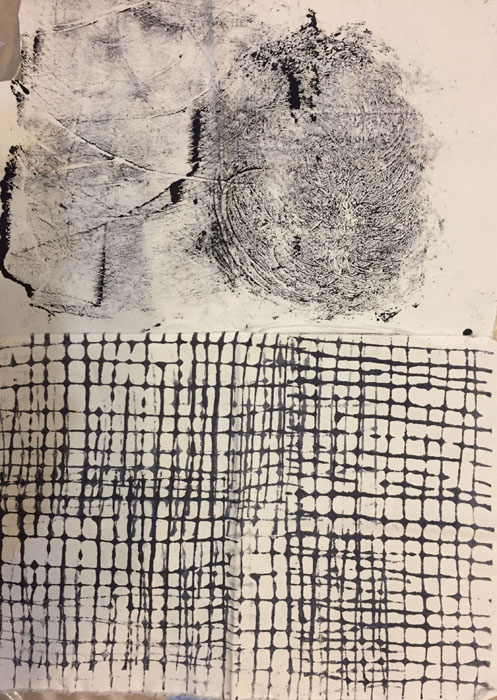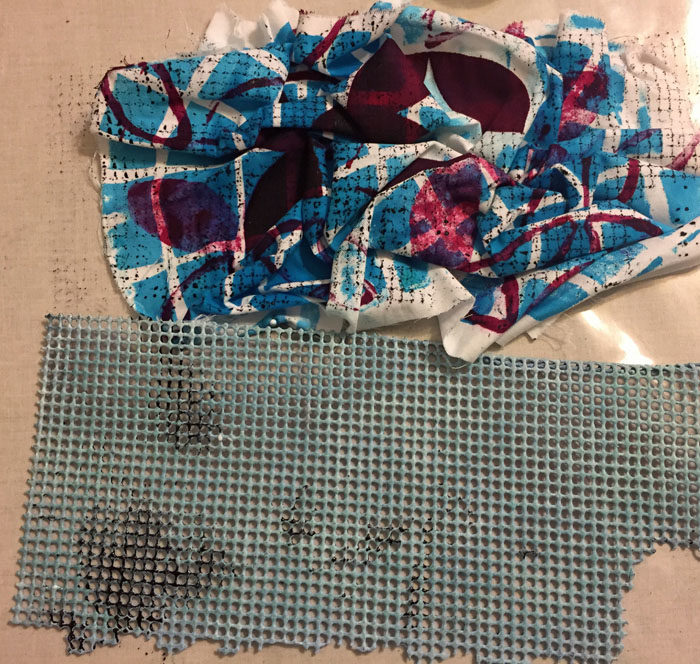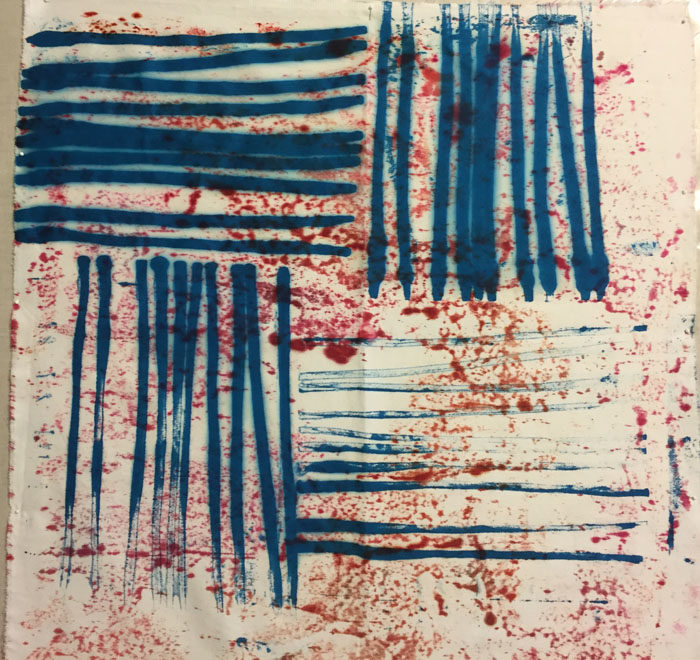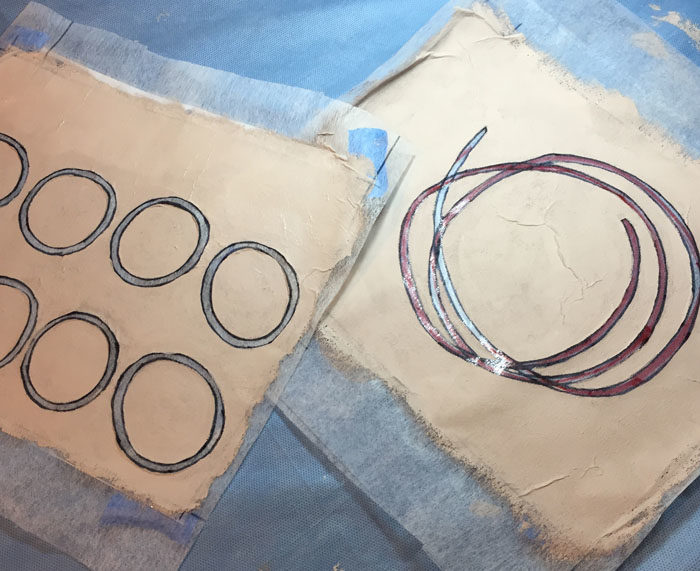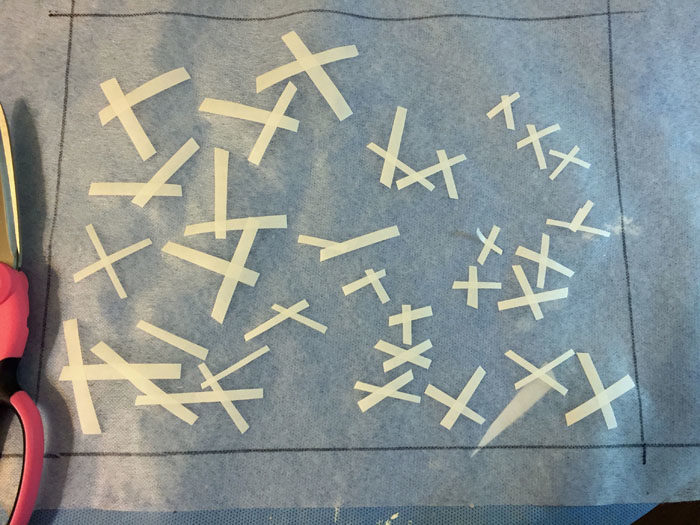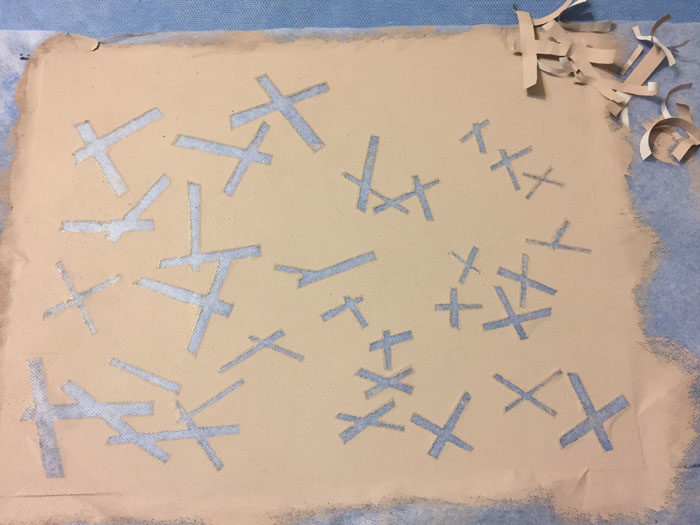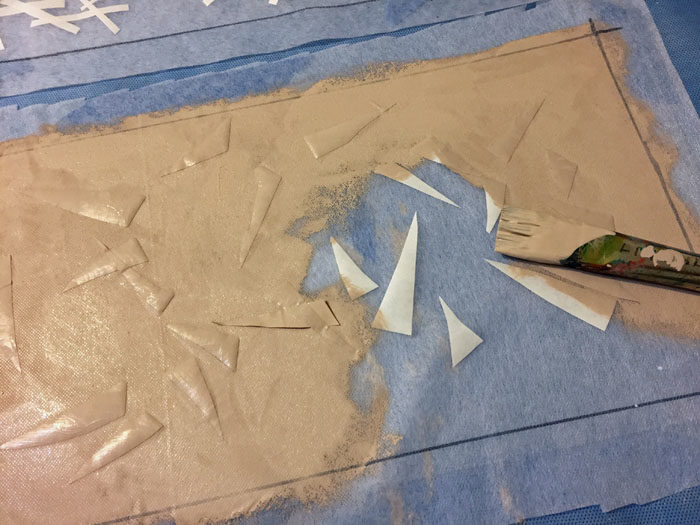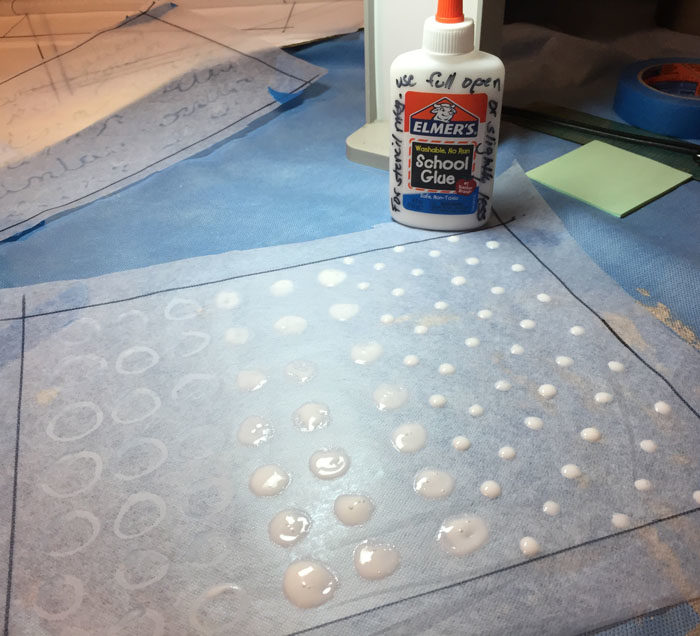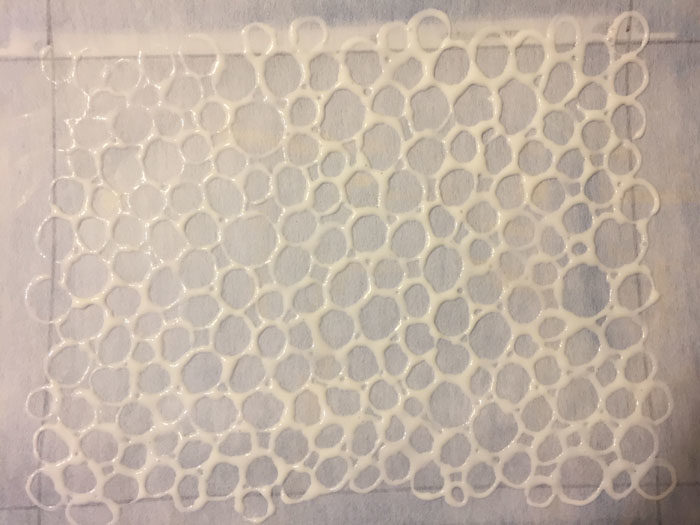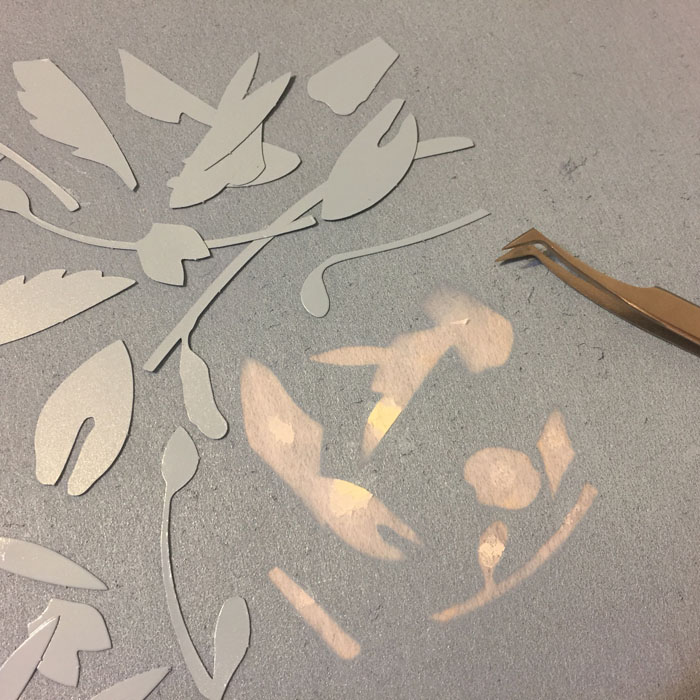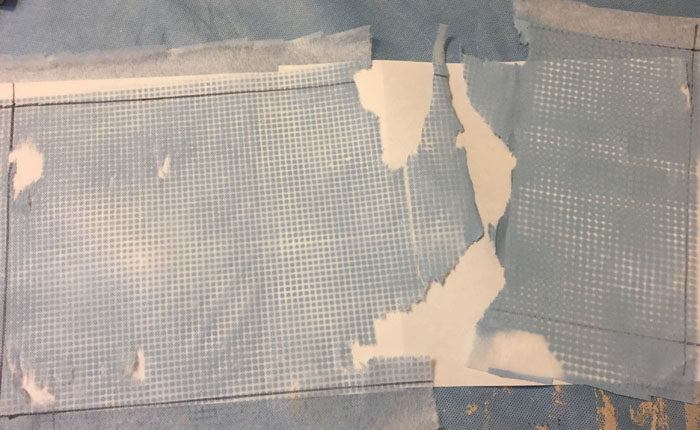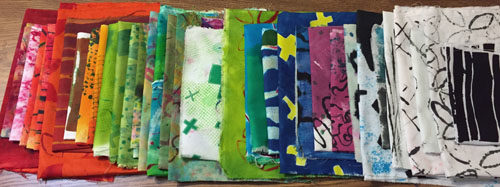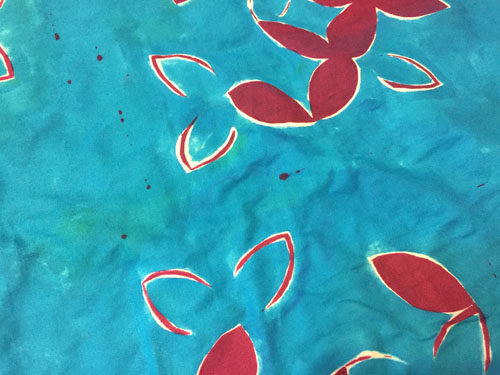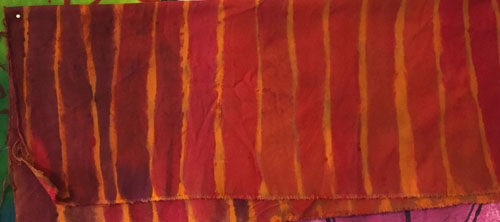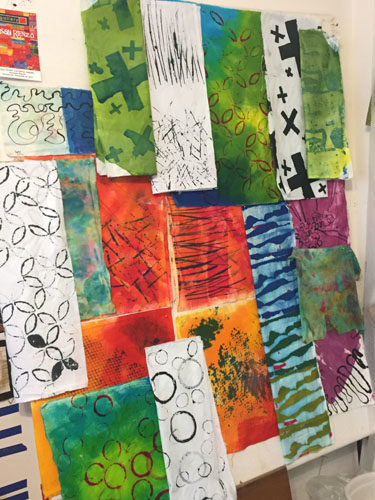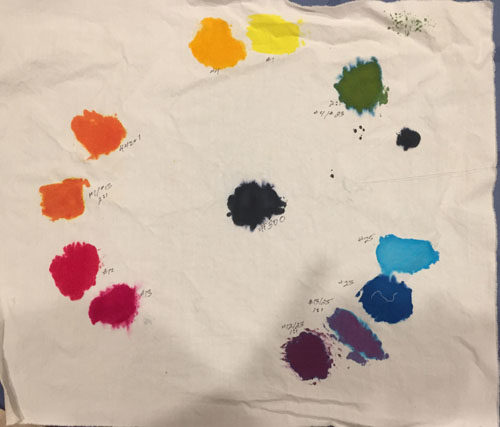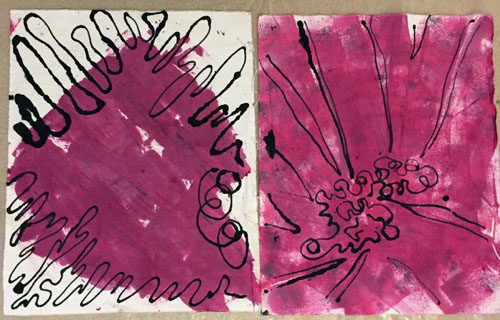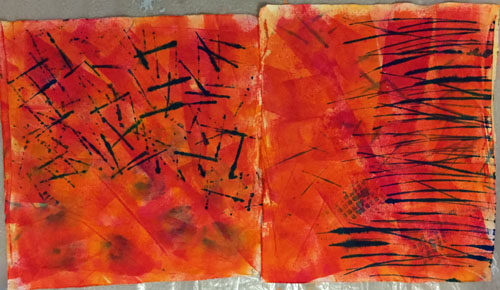After over dyeing fabrics from previous sessions, my ordered fabric arrived and I jumped at the opportunity to make some “new fabric.” That is, starting with plain white fabric. I had plans and was excited to implement them!
This one was meant to go with a favorite fabric. Therefore, I repeated the pattern and some of the colors.
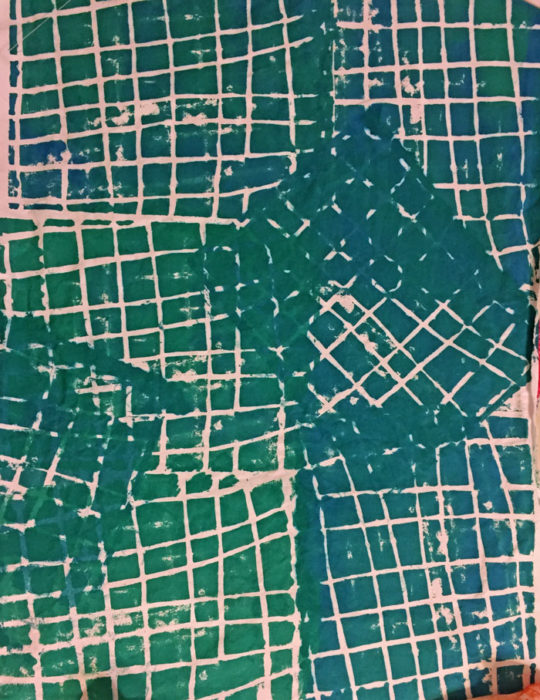
It’s VERY easy to get carried away when painting with a syringe, shown below. It’s just so much fun! The paint just glides on and you get to scribble. I think the hard part is not going overboard with this sort of thing. (Note the grid and colors which will match the fabric above.)
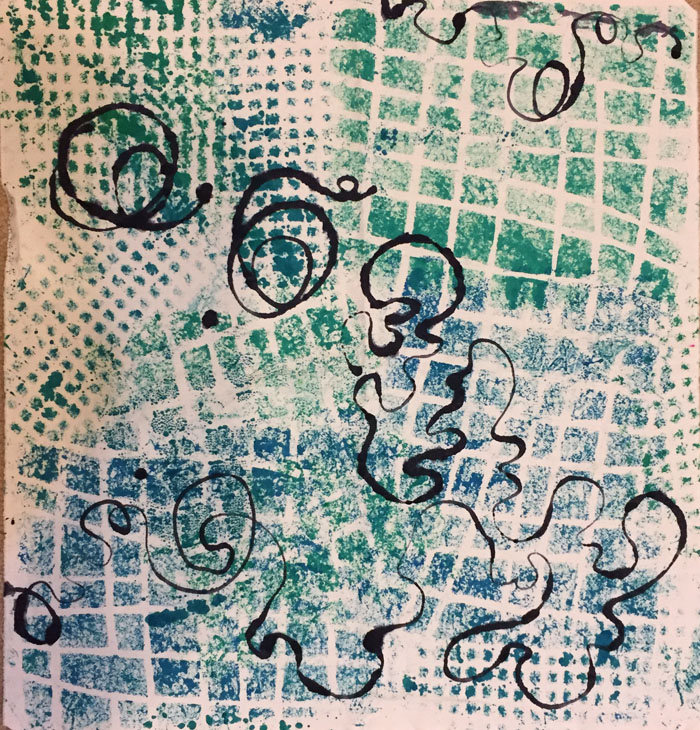
These two were made with a glue resist drawn directly on the fabric. Once it was dry, I squeegeed on thickened dye in my usual fashion. The glue washed out with the usual washing. I really like the results!

How cool are these little lines?
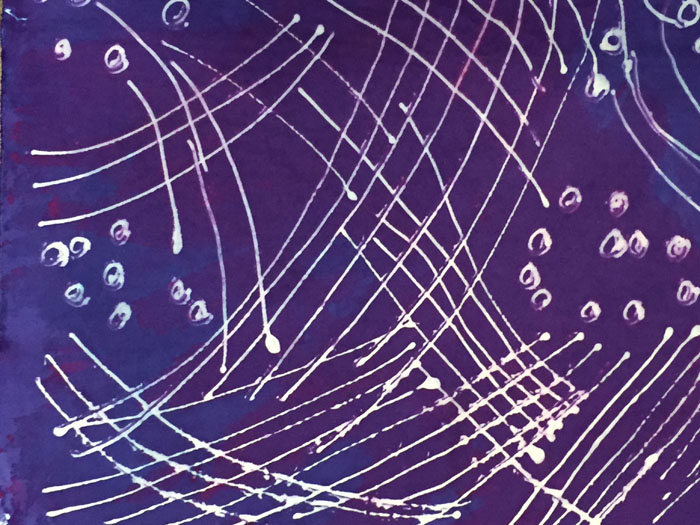
Of course, most fabrics need more than one layer of color, so some over dyeing is also called for. This nearly solid fuchsia isn’t QUITE as bright as it looks in this photo, but it’s pretty close. It definitely needed some over painting of some sort, in a darker color.

And here it is, (bottom) with a dark blue grid added. (This color is much more accurate.) The darker color definitely toned it down a bit, and added some much needed interest.

In the top fabric shown above, I used patterns predominant in my last 2 dye sessions: a grid and a petal. That way I’ll have versatility with the fabric and can use it with either combo.
Having fun!!!
Ellen Lindner


